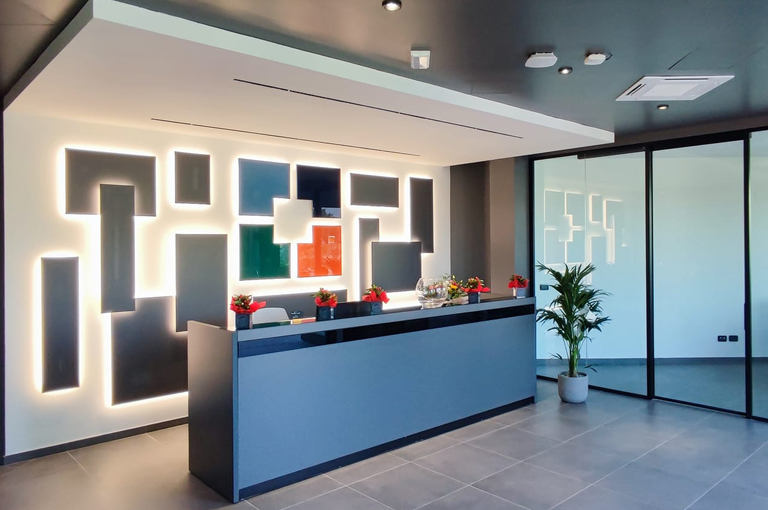Designing new workspaces is a process that involves planning, designing and creating physical environments that promote an efficient, productive and comfortable working environment.
In recent years, workspace design has undergone a major evolution due to technological developments and the emergence of new ways of working such as teleworking or hybrid work: modern workspaces tend to be more flexible and adaptable, offering open spaces for collaboration, private areas for concentration, and spaces for relaxation and socialisation, using a variety of technological solutions to facilitate work.
In general, workspace design involves a wide range of skills and approaches, including research, collection and analysis of data on employee behaviour and needs, the use of advanced technologies and interdisciplinary collaboration. Workspace design is an important element of company effectiveness and employee satisfaction. A well-designed work environment can improve employee productivity, creativity and motivation, and reduce absenteeism and turnover rates.
Stefano Nolletti, co-founder of the architecture and design studio Foschi e Nolletti, talks about this with SITLOSOPHY® while watching some clips from Fantozzi, a famous Italian comic saga that marked the 1970s, as a negative example of a workspace where employees were forced into specific paths for total control of activities and the annihilation of the individual as part of a group.
Among the most important research behind the design of optimal workspaces, Nolletti presents one of the research projects of MIT One of the most advanced academic institutions in the world in terms of research and innovation in various fields, including architecture and workspace design.
One of MIT’s research projects in the field of workspace design is ‘The Future of Work’, a multidisciplinary initiative that explores how work and the work environment are evolving in response to emerging technologies, new forms of work organisation and the needs of employees through the use of social badging (or social network analysis). A data analysis technique used to identify communication and collaboration networks between employees and how they interact with each other.
As a case study, Stefano Nolletti presented the project of Syncro Group’s headquarters, a company with several offices around the world, which chose to develop its offices with an approach aimed at interaction between employees and permeability of spaces: a winning project that has led the company to become one of the main players in its sector.
Watch the video of the speech.













